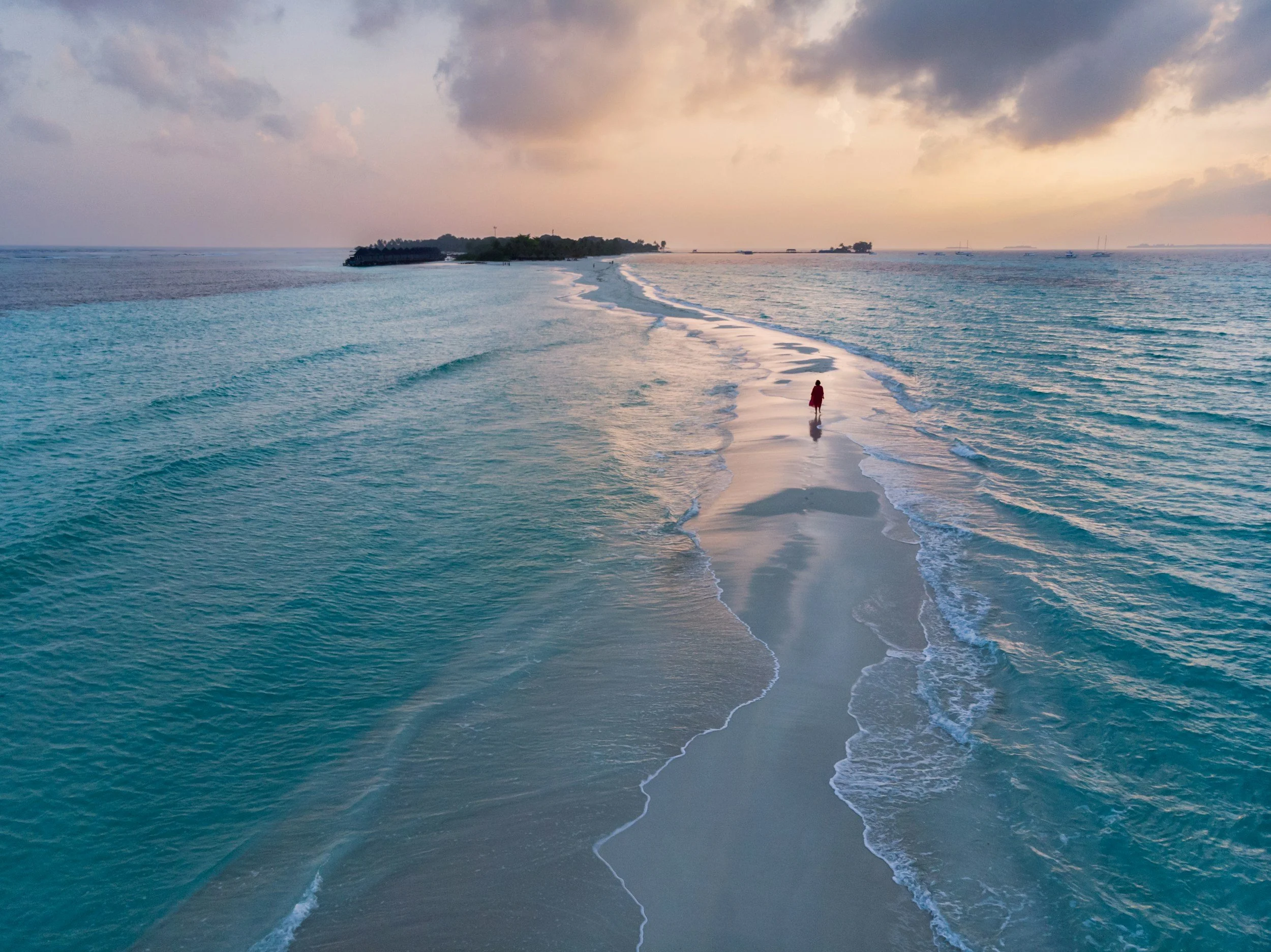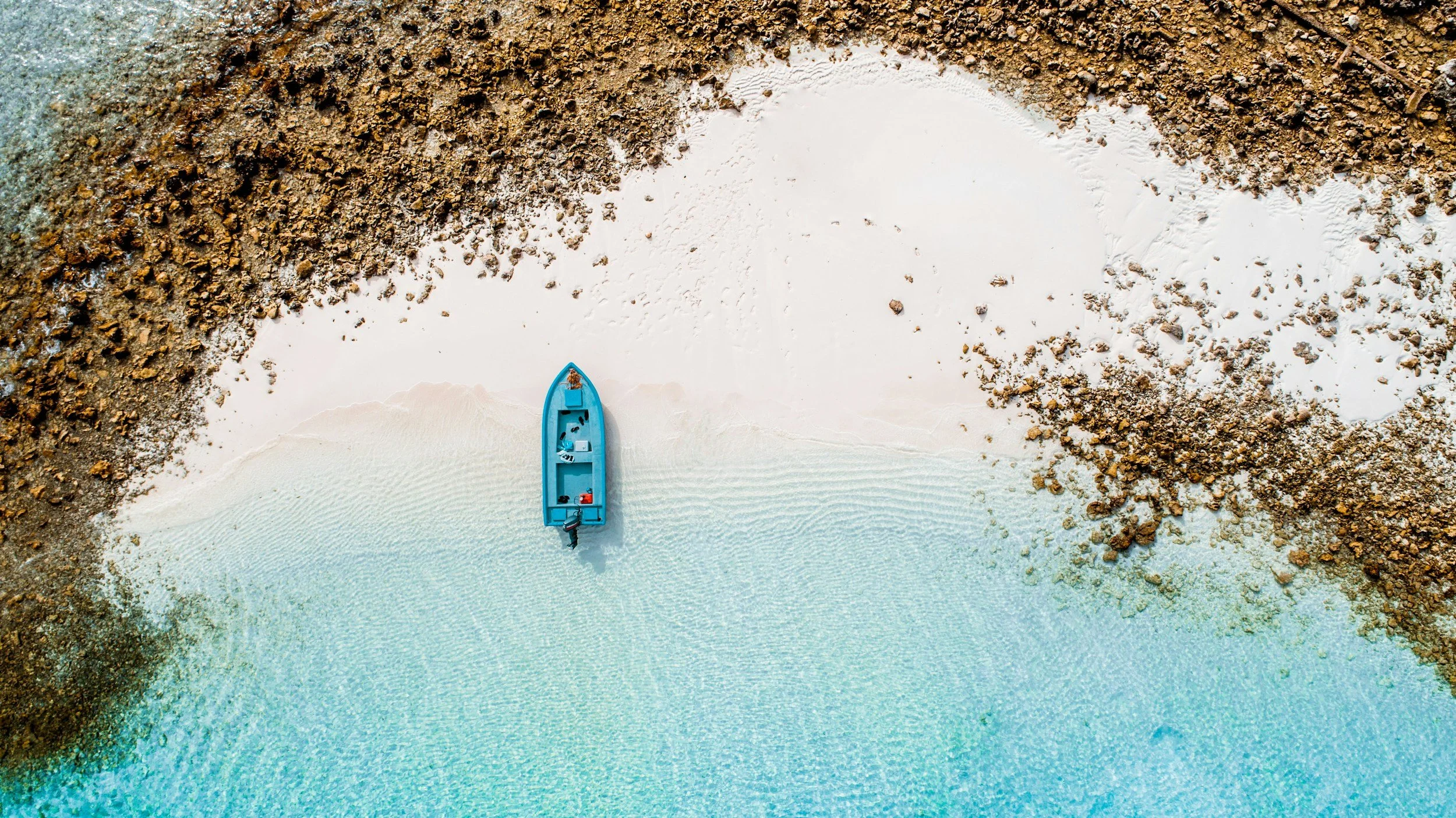What Are Sandbars? Formation, Locations & Florida Sandbars
What Is a Sandbar?
If you’ve ever waded offshore and found yourself standing on a sandy, shallow ridge that seemed to appear out of nowhere, you’ve experienced a sandbar. Sandbars are naturally occurring stretches of sand that build up just off the coast in shallow water. They can rise above the surface during low tide or remain just below, creating pockets of crystal-clear shallows perfect for swimming, shelling, or just soaking in the sun.
While sandbars technically can form in rivers and large lakes, their most iconic and most visited versions are found off sandy beaches where waves, tides, and underwater currents have shaped them over time. Sandbars constantly shift and migrate, change size with the seasons, and can even disappear and reappear depending on storms and swell.
Some sandbars are small enough to vanish with the tide. Others grow to become barrier islands, permanently altering the coastline. But no matter the size, sandbars remain one of the most fascinating and dynamic features of beach environments.
How Do Sandbars Form?
Sandbars form when ocean waves and currents move sediment, mainly sand, from the shoreline or seafloor and deposit it in a new location. When waves approach a beach, they slow down and become steeper as the water becomes shallower. This energy churns up sand from the seabed, especially in the surf zone. That sand is then carried away from the shore by a returning current known as backwash. Over time, much of that sand settles in ridges just offshore.
As more sediment is added during each tidal cycle or storm surge, these ridges grow into what we call sandbars. These features tend to form parallel to the beach and are most common in areas with abundant sandy sediment and moderate wave activity. According to the National Park Service, the combination of longshore currents and tidal flows is responsible for much of this deposition and bar formation along U.S. coastlines.
Occasionally, large storms can move sandbars dramatically, either pushing them closer to shore or sweeping them out to sea. These changes can happen surprisingly fast. In some cases, new sandbars form in just a few days, especially in regions prone to tropical systems or seasonal hurricanes.
Where Are Sandbars Located?
Beach sandbars are found all over the world, but they’re especially common along low-lying, sandy coastlines where wave action is consistent but not overpowering. Coastal regions with flat topography, plentiful sand supply, and consistent longshore currents tend to have the most active and evolving sandbar systems. These include barrier coastlines like those found along the Gulf of Mexico, the East Coast of the U.S., and tropical destinations throughout the Caribbean and Southeast Asia.
In contrast, areas with rocky or steep shorelines, like much of the Pacific Northwest, are less likely to develop large offshore sandbars because there’s less loose sediment available.
They’re also frequent near inlets, estuaries, and bay mouths where currents converge. Over time, these junctions become prime locations for sand to accumulate and form natural ridges offshore. You’ll often notice these sandbars by the pattern of breaking waves or subtle color changes in the water. For example, a transition in color from a deep blue to pale turquoise, indicates shallow sandbanks just below the surface.
Why Are Sandbars Important?
Beyond being popular for boating and beachcombing, sandbars serve vital ecological and geological roles. They create sheltered, shallow areas that support diverse marine life from crabs and mollusks to shorebirds and juvenile fish. These calm waters also provide safer areas for swimming and bathing, especially in otherwise surf-heavy beaches.
From a geological perspective, sandbars are a form of natural coastal defense. By interrupting incoming wave energy, they act like offshore speed bumps that protect the beach and dunes from direct impact. This buffering effect is one reason why barrier islands, which often begin as sandbars, are crucial for mitigating storm surge and coastal erosion.
Types of Sanbars:
Not all sandbars are created equal. Depending on how and where they form, sandbars can take on different shapes and serve different roles in the landscape. Here's a breakdown of the most common types of sandbars found around the world and along Florida’s coastline:
Offshore Bars
These are long, submerged ridges of sand that form just beyond the breaking waves. Offshore bars usually run parallel to the shoreline and are shaped by wave action, pulling sand away from the beach and depositing it offshore. You may not always see them, but you’ll often feel them underfoot while wading in shallow water.
Barrier Bars and Barrier Islands
When a sandbar builds up enough sediment over time, it can rise above sea level and become a barrier bar or, if it's large enough, a barrier island. These features often run parallel to the coast and act as natural buffers, protecting the mainland from storms and erosion. Much of Florida’s Gulf Coast, including popular spots like Shell Key and Egmont Key, is technically a barrier island formed from ancient sandbars.
Baymouth Bars
Baymouth bars form when a sandbar grows across the entrance of a bay or inlet, partially or fully closing it off from the open ocean. These formations often create sheltered lagoons behind them, which are ideal habitats for fish, birds, and other marine life.
Spits
A spit is a narrow sandbar that extends from the coastline into open water, often curving due to changing currents or wind direction. Spits are shaped by longshore drift, where sediment moves along the coast due to angled wave action. Over time, spits can grow large enough to partially enclose a bay or estuary.
Tombolos
Tombolos are unique sandbars that connect an offshore island to the mainland or another island. They’re formed when waves refract around both sides of an island and deposit sand in the calm area between them. The result is a natural bridge made of sand, great for exploration at low tide.
Florida’s Famous Sandbars
Florida’s Gulf Coast is a haven for sandbar enthusiasts. The flat, sandy seafloor and active tidal systems make the region a hotspot for shifting sandbanks and exposed shoals.
In the St. Pete area alone, you’ll find sandbars popping up between barrier islands, near inlets, and even in the middle of the bay. These shallow patches of sand often appear and disappear with the tides, making them perfect for boating day trips, snorkeling, or simply lounging in ankle-deep, turquoise water.
One popular example is Passage Key, located at the mouth of Tampa Bay between Anna Maria Island and Egmont Key. Once a small island, it’s now primarily a submerged sandbar that only reveals itself during low tide. It’s known for its soft white sand, wildlife sightings, and tranquil waters, ideal for a relaxing stop during a boat tour.
Nearby, the waters around Shell Key and Egmont Key feature their sandbar networks. These spots attract locals and visitors alike, especially during weekends and holidays when shallow water makes it safe and accessible for families and snorkelers.
The Florida Fish and Wildlife Conservation Commission notes that these nearshore sand features not only provide recreation but also serve as nesting and feeding grounds for birds and marine life. Their role in the region’s ecosystem is as important as their appeal to beachgoers.
Planning Your Own Sandbar Adventure
There’s something magical about standing in the middle of the water, surrounded by the ocean on all sides, with your feet in soft, sun-warmed sand. That’s the sandbar experience, and it’s one of the best-kept secrets along Florida’s west coast.
If you’re looking to experience it for yourself, we offer Private Sandbar Tours that take you to some of the most beautiful and secluded sandbars in the St. Pete and Tampa Bay area. Whether you're searching for shells, swimming in clear shallows, or just anchoring for a picnic with a view, our local captains know all the best spots!



